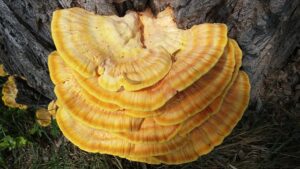Imagine you finally have time to play golf, and you can’t wait to get started. You start packing your golf bag, and you think of the upcoming game. It’s a new course, but you’ve played golf before, and you’re confident you’ll do well. You’ve been playing for some time now, and you know your game is solid. However, when you get to the course, you are met with a different terrain. This is something you didn’t expect, and you realize your golfing skills may not help you much here. If you’ve been in this position before, then you know the importance of adapting your game to different golf course types. To truly master the game of golf, you need to adapt your strategy to different types of courses. From tee shot selection to reading greens and handling changing weather conditions, there are key elements that can make or break your round. Let’s find out how you can adjust your game to excel on any course you encounter.
Course Layout
 The course layout sets the stage for your entire round of golf. Each course has its own personality, presenting a mix of challenges and opportunities that you must navigate strategically. Pay attention to the placement of hazards, bunkers, water features, and doglegs – they can either work in your favor or trip you up if you’re not careful. You’ll also gain an edge if you study the map of the course before teeing off to get a sense of what lies ahead. Visualize each hole in your mind’s eye and plan your approach accordingly. Consider how factors like elevation changes, slopes, and wind direction will influence your shots throughout the round.
The course layout sets the stage for your entire round of golf. Each course has its own personality, presenting a mix of challenges and opportunities that you must navigate strategically. Pay attention to the placement of hazards, bunkers, water features, and doglegs – they can either work in your favor or trip you up if you’re not careful. You’ll also gain an edge if you study the map of the course before teeing off to get a sense of what lies ahead. Visualize each hole in your mind’s eye and plan your approach accordingly. Consider how factors like elevation changes, slopes, and wind direction will influence your shots throughout the round.
Tee Shot Selection
When it comes to adapting your game to different golf course types, tee shot selection plays a crucial role in determining your success. Each hole presents its challenges, from narrow fairways to strategically placed hazards. Before teeing off, take a moment to assess the layout of the hole and consider factors such as wind direction, doglegs, and bunkers. As mentioned in GolfEW’s channel, picking the right club for your tee shot is essential in setting yourself up for huge success on the rest of the hole.
Green Reading
In addition, you can’t neglect how crucial the art of green reading is. Green reading involves analyzing the slope, grain, and speed of the putting surface to determine the ideal line and pace for your putt. One key element to focus on is observing how the grass around the hole is cut. The direction in which the grass blades lean can indicate how the ball will break when rolling toward the cup. Additionally, paying attention to any subtle slopes or undulations on the green can help you anticipate how your ball will behave once it’s putted. Taking note of shadows cast by nearby trees or buildings can also provide insights into slope direction.

Weather Conditions
Weather can make or break how the ball travels and behaves during your round. For instance, playing in windy conditions requires adjusting your shot selection and …

 Reishi is a type of functional mushroom used for ages in Chinese herbal remedies to treat various ailments. It’s also known as the “mushroom of immortality.” Recent research suggests that reishi may have potent anti-inflammatory effects, making it such a powerful natural remedy for those suffering from inflammatory conditions. In the IJMS (International Journal of Molecular Sciences), we found that reishi extract can inhibit inflammation by reducing the production of pro-inflammatory molecules like interleukin-6 (IL-6), tumor necrosis factor-alpha (TNF-alpha), and nitric oxide (NO). These molecules act as a major role in the development and progression of chronic inflammation.
Reishi is a type of functional mushroom used for ages in Chinese herbal remedies to treat various ailments. It’s also known as the “mushroom of immortality.” Recent research suggests that reishi may have potent anti-inflammatory effects, making it such a powerful natural remedy for those suffering from inflammatory conditions. In the IJMS (International Journal of Molecular Sciences), we found that reishi extract can inhibit inflammation by reducing the production of pro-inflammatory molecules like interleukin-6 (IL-6), tumor necrosis factor-alpha (TNF-alpha), and nitric oxide (NO). These molecules act as a major role in the development and progression of chronic inflammation.